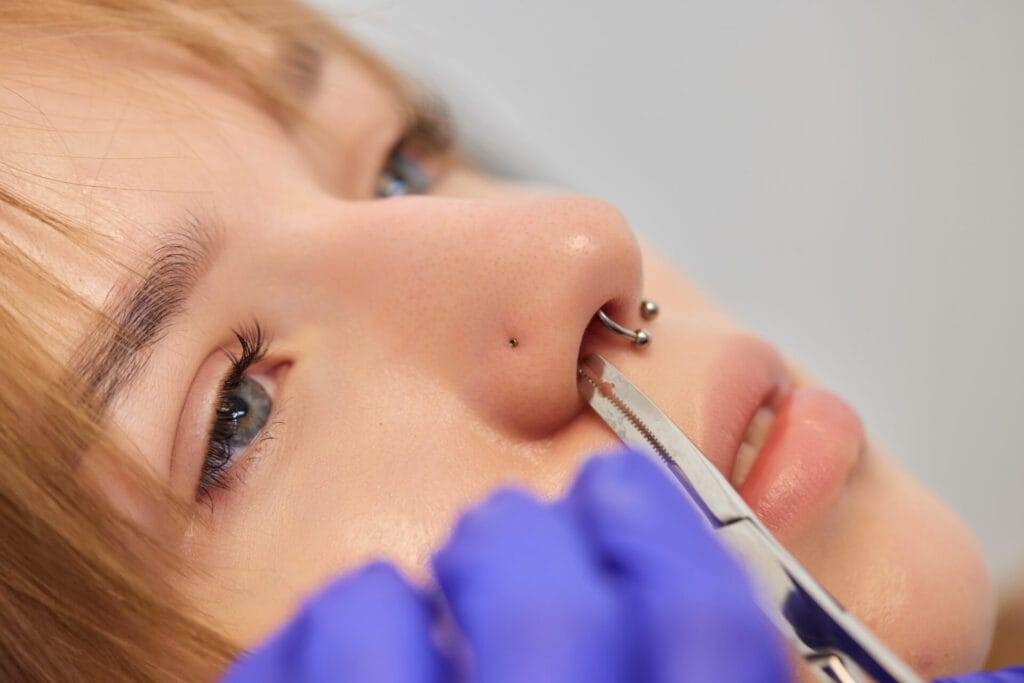Piercing has a rich history dating back thousands of years, with cultural significance in various societies around the world. From ancient rituals to modern fashion statements, piercing has evolved into a popular form of self-expression. In recent times, the art of piercing has gained mainstream acceptance and popularity, with more people embracing body modifications as a way to showcase their individuality and personal style.
The Importance of Training and Certification
One of the most crucial aspects of becoming a professional piercer is obtaining proper training and certification. Untrained piercers pose significant risks to clients, including infections, nerve damage, and improper placement of piercings. Formal training not only equips piercers with the necessary skills and knowledge to perform safe and effective piercings but also instills a sense of professionalism and ethical standards in their practice. Continuing education is also essential in staying updated on the latest techniques and safety protocols in the industry.
Building a Strong Foundation: Understanding Anatomy and Physiology
A solid understanding of anatomy and physiology is fundamental for any piercer. Knowing the body’s structure and function helps piercers make informed decisions about placement, avoid vital areas, and minimize risks during the piercing process. Without proper knowledge of anatomy, piercers may inadvertently cause harm to clients, leading to complications and legal issues. Resources such as anatomy textbooks, online courses, and workshops can help piercers deepen their understanding of the human body.
The Art of Communication: Developing a Rapport with Clients
Building trust and rapport with clients is essential for a successful piercing experience. Effective communication skills are key to understanding clients’ needs, addressing their concerns, and managing expectations. Techniques such as active listening, empathy, and clear explanations can help piercers establish a positive relationship with clients. Dealing with difficult clients requires patience, professionalism, and conflict resolution skills to ensure a positive outcome for both parties.

The Tools of the Trade: Understanding Piercing Equipment
Piercing equipment plays a crucial role in ensuring safe and hygienic procedures. From needles and forceps to jewelry and aftercare products, piercers must have a thorough understanding of the tools they use. Proper sterilization techniques, regular maintenance of equipment, and adherence to industry standards are essential for preventing infections and complications. Resources such as manufacturer guidelines, industry publications, and mentorship can help piercers stay informed about the latest advancements in piercing equipment.
Techniques for Safe and Effective Piercing
The piercing process involves several steps, including preparation, marking, piercing, and aftercare instructions. Techniques for minimizing pain and discomfort during the procedure include using appropriate needle sizes, applying topical numbing agents, and maintaining a calm environment for the client. Tips for avoiding complications include proper hand hygiene, sterile technique, and following aftercare guidelines to promote healing.
Working with Different Skin Types and Body Parts
Different skin types and body parts require specialized techniques for safe and effective piercing. Understanding the unique characteristics of each area helps piercers choose the right jewelry size, placement, and aftercare instructions for optimal healing. Working with sensitive skin requires extra care to prevent irritation or allergic reactions. Techniques such as using hypoallergenic materials, avoiding harsh chemicals, and providing gentle aftercare recommendations can help minimize risks for clients with sensitive skin.
Aftercare and Healing: Ensuring Proper Care for Pierced Areas
Proper aftercare is crucial for promoting healing and preventing infections in pierced areas. Providing clients with clear aftercare instructions, including cleaning routines, avoiding irritants, and monitoring for signs of infection, is essential for a successful healing process. Techniques such as using saline solutions for cleaning, avoiding touching or rotating jewelry excessively, and seeking medical attention for persistent issues can help clients maintain healthy piercings.
Troubleshooting: Dealing with Complications and Difficult Clients
Despite best efforts, complications may arise during the piercing process or healing period. Common issues such as infections, migration, rejection, or allergic reactions require prompt identification and appropriate intervention to prevent further complications. Dealing with difficult clients involves active listening, empathy, problem-solving skills, and clear communication to address their concerns effectively. Resources such as industry guidelines, experienced mentors, or medical professionals can provide guidance in handling complex cases.
Staying Up-to-Date: Keeping Current with Industry Trends and Best Practices
Staying informed about industry trends is essential for professional growth and maintaining high standards in the piercing industry. Resources such as industry publications, online forums, social media groups, and conferences offer opportunities to learn about new techniques, materials, regulations, or best practices in the field. Attending conferences and workshops allows piercers to network with peers, exchange knowledge, and stay updated on emerging trends that can enhance their practice.
The Rewards of Expertise: Career Advancement and Personal Fulfillment
Becoming an expert in the piercing industry opens up various career opportunities beyond basic piercing services. Specializing in advanced techniques such as dermal anchors, surface piercings, or genital piercings can set piercers apart in the industry. The benefits of expertise include higher earning potential, job satisfaction, professional recognition, and opportunities for mentorship or teaching roles within the community. Personal fulfillment comes from helping clients express themselves through body modifications while promoting safety standards and ethical practices in the industry.

The Importance of Education and Expertise in the Piercing Industry
In conclusion, education and expertise are paramount in ensuring safe and effective piercing practices that prioritize client well-being. Training programs provide piercers with essential skills, knowledge, and ethical standards needed to succeed in the industry. By understanding anatomy and physiology, developing strong communication skills with clients, mastering proper equipment use techniques, staying updated on industry trends through continuing education opportunities – piercers can build successful careers while making a positive impact on their clients’ lives through body modifications that reflect individuality and self-expression. Encouraging aspiring piercers to pursue education and certification will not only benefit their professional growth but also elevate industry standards for safer practices overall.
In conclusion, education and expertise are paramount in ensuring safe and effective piercing practices that prioritize client well-being. Training programs provide piercers with essential skills, knowledge, and ethical standards needed to succeed in the industry. By understanding anatomy and physiology, developing strong communication skills with clients, mastering proper equipment use techniques, and staying updated on industry trends through continuing education opportunities, piercers can build successful careers while making a positive impact on their clients’ lives through body modifications that reflect individuality and self-expression. Encouraging aspiring piercers to pursue education and certification will not only benefit their professional growth but also elevate industry standards for safer practices overall.








